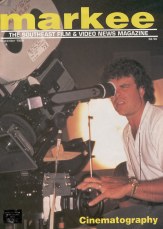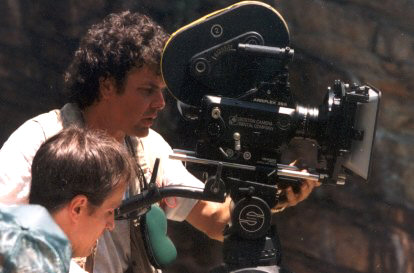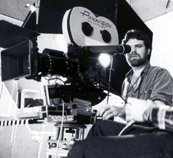Interview With Bill Mills (2001)
 Bill Mills was the Cinematographer of both Sleepaway Camp 2: Unhappy Campers & Sleepaway Camp 3: Teenage Wasteland. He was responsible for the crisp visual feel of the dual flicks. This interview was conducted in 2001 by James Hendsbee and not formally made public till now (2007). Bill Mills was the Cinematographer of both Sleepaway Camp 2: Unhappy Campers & Sleepaway Camp 3: Teenage Wasteland. He was responsible for the crisp visual feel of the dual flicks. This interview was conducted in 2001 by James Hendsbee and not formally made public till now (2007).
James: Please tell the SC fans a bit about yourself and your background. How long have you been in the business? Where did you study film? How did you get your start in the business?
Bill: I managed to get my hands on a super 8 camera when I was about 13. Shot the usual home movies but found that I enjoyed watching life through the camera’s eyes. In high school I shot several short films. It was in high school that I met Michael Simpson, who was editor of the school paper. After hs grad, I worked as a writer/photographer for a local newspaper. After barely missing the draft, I decided to go to the University of Georgia and study Journalism TV-Film in Athens, Ga. I pretty much worked my way through school in a variety of non film jobs and in the last two years was hired to manage the photo lab and assist in the production of the football television program editing, some shooting, etc. After graduation I took a job as the commercial cinematographer in a sleepy south Ga. Town called Albany at an NBC station. Fortunately, it was 1975 and just down the road was a even sleepier town called Plains, Ga. A peanut farmer named Jimmy Carter had just been nominated for Pres. So we were called on by NBC to cover much of the events leading up the election. Learned to work fast and with a minimum of equipment.
James: What have you been up to since your work on the Sleepaway sequels? What projects are you currently working on?
Bill: More than I can remember. A number of features, Bedroom Window, Fast Food, Invasion USA, Fried Green Tomatoes, Heat Of The Night, Wild America. In 1994 I met a wonderful Director, Mark Stouffer, and worked extensively on a number of National Geographic Specials including a show on Siberian Tigers. Since then I've been to 18,000 feet in a Russian Mini Sub, filmed Tiger Sharks in the Pacific, Bluefin Tuna in Japan, and the winter and summer Olympics, in between commercials, BBC documentaries, and independent programs. Its a never ending procession of projects and it beats the hell out of sitting in a cubicle.

Bill with Norman Andrews (second assistant cameraman on Sleepaway Camp 2)
James: How did shooting the SC films compare to other projects that you have done? What challenges did you have with these two films and their quick production schedule and low budget?
Bill: It was great working with a tight knit group of friends on the series. At the time there wasn’t a better group of film technicians and artists in the Atlanta area. I think most of us thought the script was a bit goofy but we enjoyed the comraderie and sort of approached the genre with tongue in cheek. Pam Springsteen was great and kept us all laughing and amused by the whole thing.
James: What kind of shooting ratio did you have? Did you shoot 1.85:1 widescreen or 1.33:1 full frame?
Bill: The shows were shot 1.85:1 with consideration for tv release.
James: Did shooting in a remote location create problems for you as the DP? What type of lights did you use for in scenes in the woods? Was lighting ever a problem for other night scenes? What were some of the special challenges for you while filming in the woods?
Bill: We shot 80% if the show at an abandoned camp in west Georgia. I had a very talented crew led by gaffer Keith Sherer and Key Grip Roger Sherer (brothers). Keith is brilliant at night lighting and we incorporated the Moonlight concept of night lighting, a big source for an edge with minimal fill. We were constantly amazed at the Agfa films ability to dig into the shadow.
James: What type of cameras and lenses were used for the films? What film stock did you use? Why?
 Bill: We used an Arri BL 4 as our A camera and a Arri 3 as the B camera. At the time, Kodak did not have the Visionstocks so we shot both shows with Agfa 320 asa I believe. We just liked the way it handled the night exteriors. Panavision was a bit pricey at the time. Bill: We used an Arri BL 4 as our A camera and a Arri 3 as the B camera. At the time, Kodak did not have the Visionstocks so we shot both shows with Agfa 320 asa I believe. We just liked the way it handled the night exteriors. Panavision was a bit pricey at the time.
James: Director Michael Simpson spoke highly of you and the crew. Tell us a bit about the crew.
Bill: We were all the best of friends. Usually at the day or nights wrap we would gather in the lodge and the musicians among us would play for hours. Many of the crew went on to major Hollywood features.
|

